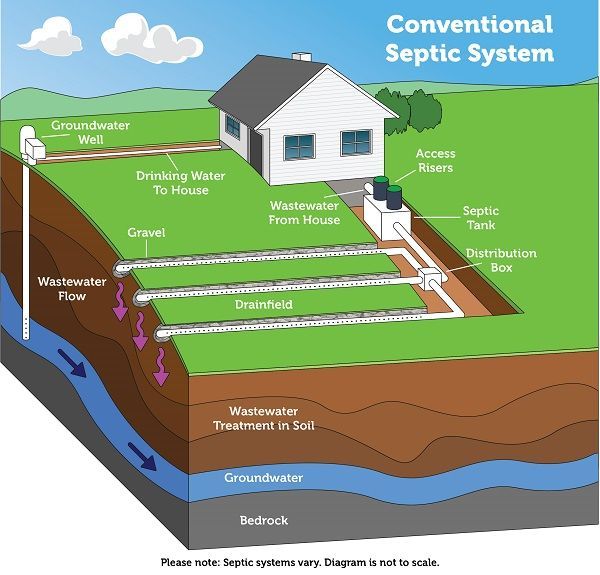Septic systems are an essential part of any residential or commercial property that is not connected to a municipal sewage system. Conventional gravity septic systems are one of the most common types of septic systems used in residential areas. In this blog, we will explore the basic working of a conventional gravity septic system, its components, and maintenance requirements.
What is a conventional gravity septic system?
A conventional gravity septic system is a simple and cost-effective system that uses gravity to move wastewater from the home to the septic tank and then to the drain field. The system is comprised of two main components: the septic tank and the drain field. The septic tank collects and separates the wastewater, while the drain field allows the treated wastewater to seep back into the soil.
How does a conventional gravity septic system work?
A conventional gravity septic system works by using gravity to move wastewater from the home to the septic tank. The wastewater flows into the septic tank where the solids settle to the bottom, and the grease and oil float to the top. The liquid wastewater in the middle of the tank is then drained out of the tank and into the drain field.
What are the components of a conventional gravity septic system?
A conventional gravity septic system has two main components: the septic tank and the drain field. The septic tank is typically made of concrete, fiberglass, or polyethylene and is buried underground. It collects and separates the wastewater from the home into three layers: scum, liquid, and sludge.
The drain field is made up of a series of perforated pipes buried in a bed of gravel or other porous material. The pipes allow the treated wastewater to seep back into the soil where it is naturally filtered and treated.
How do you maintain a conventional gravity septic system?
Maintaining a conventional gravity septic system is crucial to ensuring its long-term efficiency and preventing costly repairs. Here are some tips for maintaining your septic system:
1.) Regular pumping: The septic tank should be pumped out every 3-5 years, depending on the size of the tank and the number of occupants in the home.
2.) Water conservation: Conserving water can help prevent overloading the septic system. Fixing leaky faucets and toilets, taking shorter showers, and using high-efficiency appliances can all help conserve water.
3.) Proper disposal: Only human waste and toilet paper should be flushed down the toilet. Avoid flushing other items such as paper towels, feminine hygiene products, or cleaning wipes, as they can clog the system.
4.) Avoiding heavy machinery: The drain field should be protected from heavy machinery and vehicles as they can damage the pipes and the bed of gravel.
In conclusion, conventional gravity septic systems are a simple and effective solution for properties that are not connected to a municipal sewage system. By understanding the basic working of the system, its components, and maintenance requirements, homeowners can ensure the longevity and efficient performance of their septic system. Regular maintenance, proper use, and care can prevent costly repairs and extend the life of the septic system.

